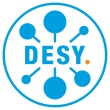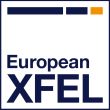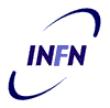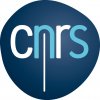Partners

Deutsches Elektronen-Synchrotron
The Deutsches Elektronen-Synchrotron (DESY) is one of the world’s leading centres for the investigation of the structure of matter. DESY develops, runs, and uses accelerators and detectors for photon science and particle physics. DESY is a national research centre supported by public funds and member of the Helmholtz Association. It operates the third generation synchrotron light source PETRA III and FLASH, the first free electron laser in the world for vacuum ultraviolet and soft X-ray radiation, and has prepared the construction of the European XFEL in Hamburg.

ELETTRA Sincrotrone Trieste
Elettra Sincrotrone Trieste is an international research centre located in the North of Italy. It is specialised in the production of synchrotron light and its application to the study of matter in its various physical states: solid, liquid, and gas. The centre hosts two different synchrotron light sources: Elettra, a third-generation storage ring after which the centre itself is named, and FERMI, a cutting-edge free electron laser. By providing the scientific community and the private sector with constantly updated services, Elettra Sincrotrone Trieste pursues its own mission - promoting cultural, social, and economic growth - on an international level through three key activities: basic and applied research, technical and scientific training, and technology and knowledge transfer.

European XFEL
The European XFEL is a new, powerful X-ray laser in northern Germany. It provides scientists from all over the world with ultrashort X-ray flashes - 27000 times per second and with a brilliance a billion times higher than that of the best conventional X-ray radiation sources - opening completely new research opportunities for scientists and industrial users.
The European XFEL is a 3.4-kilometre-long facility mainly located in underground tunnels. It runs from the DESY research centre in the city of Hamburg into the neighbouring German federal state of Schleswig-Holstein. Construction and operation of the facility has been entrusted to an independent research organisation, the European X-Ray Free-Electron Laser Facility GmbH (European XFEL GmbH), a non-profit limited liability company under German law with international shareholders. It was founded on 28 September 2009 and has a workforce of about 300 people. At present, 12 countries are participating in the European XFEL: Denmark, France, Germany, Hungary, Italy, Poland, Russia, Slovakia, Spain, Sweden, Switzerland, and the United Kingdom.
The European XFEL is being realised as a joint effort of many partners. To this end, the European XFEL GmbH cooperates closely with the DESY research centre and other organisations worldwide. To a great extent, the European XFEL facility was realised by means of in-kind contributions by shareholders and partners.
The European XFEL facility consists of a superconducting linear particle accelerator that boosts electrons to high energies. The electrons are then directed through long, special arrangements of magnets (undulators) where they emit extremely short and intense X-ray flashes with laser properties. These X-ray flashes are then distributed to initially three beamlines with six experimental stations.
Using the European XFEL’s brilliant X-ray radiation, physicists, chemists, biologists, and other scientists from all over the world are able to map the atomic details of viruses, decipher the molecular composition of cells, take three-dimensional images of the nanoworld, film chemical reactions, study processes such as those occurring deep inside planets, and more. The new X-ray laser facility is opening up areas of research that were previously inaccessible and thus benefits a whole range of scientific fields - among them medicine, pharmacy, chemistry, physics, materials science, nanotechnology, energy technology, and electronics.

Helmholtz-Zentrum Berlin
Helmholtz-Zentrum Berlin für Materialien und Energie (HZB) operates two large scale scientific facilities for investigating the structure and function of matter: The research reactor BER II for experiments with neutrons, and the electron storage ring BESSY II, producing an ultrabright photon beam ranging from Terahertz frequencies to hard X-rays.
HZB has a long tradition in FEL-related R&D: HZB has developed and operates the HoBiCaT Test Facility to study CW operation of TESLA cavities, the heart of linacs in virtually all FEL projects. Furthermore, HZB cooperates with DESY on the FLASH2 extension and the seeding project sFLASH. HZB scientists are currently working on BESSY-VSR, a novel approach to create long and short photon pulses simultaneously for all beamlines through a pair of superconducting bunch compression cavities in the Storage Ring BESSY II. BESSY-VSR also represents a missing link between the extreme average brilliance of ultimate storage rings like PETRA III and Free Electron Lasers. Within the next years, HZB will build and put into operation BERLinPro, for accelerator studies and technology development to demonstrate the feasability of a X-ray user facility.

Helmholtz-Zentrum Dresden-Rossendorf
Helmholtz-Zentrum Dresden Rossendorf (HZDR) is a member of the Helmholtz Association of German Research Centres. It carries out pioneering research on energy, health, and matter in order to answer questions of societal concern, with the aim to allow us maintain and improve our lives. HZDR operates and uses large-scale and complex research infrastructure for the understanding of matter and materials. They provide the free-electron-laser facility FELBE for user experiments.

Instituto Nazionale di Fisica Nucleare
The National Institute of Nuclear Physics (INFN) is an Italian organisation dedicated to the study of fundamental constituents of matter, and conducts theoretical and experimental research in the fields of subnuclear, nuclear, and astroparticle physics. Fundamental research in these areas requires the use of cutting-edge technologies and instrumentation, which the INFN develops both in its own laboratories and in collaboration with the world of industry.
INFN runs the short-wavelength FEL facility SPARC in Frascati.

MAX IV laboratory
MAX IV laboratory is a Swedish national laboratory for synchrotron radiation, accelerator physics, and nuclear physics research. MAX IV lab is operated by Lund University on behalf of the Swedish Research Council. The facility provides synchrotron radiation from three storage rings to more than 800 international researchers every year. MAX IV lab is in the process of constructing MAX IV – the next generation synchrotron radiation facility in Sweden. The newly designed accelerator system is based around a 3.5 GeV storage ring and a full energy linac injector. The linac injector is built with the aim to also provide a high quality beam for a free electron laser (MAX IV FEL). The MAX IV project has been funded in April 2009.

National Centre for Nuclear Research
The National Centre for Nuclear Research (NCBJ) is a state owned laboratory located near Warsaw, Poland. It carries out pure and applied research in elementary particle and nuclear physics, hot plasma physics, and related fields. It also produces specialised equipment for various applications (notably for medicine and environmental protection). The Scientific Council of the National Centre grants Ph.D. and habilitation degrees. The National Centre conducts advanced training for various internal and external groups. The centre plans to build a FEL driven by a superconducting linear accelerator, called PolFEL.

National Center for Scientific Research
The National Center for Scientific Research (CNRS) in France is the largest fundamental research organisation in Europe, undertaking research in natural and social sciences, as well as in engineering. Under the Laboratoire de Chimie Physique, the centre operates the CLIO free electron laser user facility.

Paul Scherrer Institute
Paul Scherrer Institute (PSI) is the largest research centre for natural and engineering sciences within Switzerland. We perform world-class research in three main subject areas: structure of matter, energy and the environment, and human health. By conducting fundamental and applied research, we work on long-term solutions for major challenges facing society, industry, and science. PSI employs 1300 members of staff, making it the largest of the national research institutions. We develop, build, and operate complex large scale research facilities which impose particularly high requirements in terms of knowledge, experience, and professionalism. PSI is one of the world’s leading user laboratories for the national and international scientific community.

Radboud University
Radboud University (RU) is a research oriented university located in Nijmegen, The Nederlands. At Radboud University, the Institute for Molecules and Materials (IMM) is an interdisciplinary research institute in chemistry and physics. Its mission is to fundamentally understand, design, and control the functioning of molecules and materials. The user facility FELIX (Free Electron Lasers for Infrared eXperiments) is embedded in the IMM and provides the international user community with radiation in the infrared and THz regime.

Science and Technology Facilities Council
The Science and Technology Facilities Council (STFC) is an independent, non-departmental public body of the UK Government’s Department for Business, Innovation and Skills. It is one of Europe‘s largest multidisciplinary research organisations supporting scientists and engineers world-wide. The Council provides large scale research facilities in the UK including the ISIS neutron facility, the Central Laser Facility, and High Performance Computing and is a major stakeholder in the Diamond Light Source. It also provides access to overseas facilities.

Synchrotron SOLEIL
SOLEIL is the French national synchrotron facility, a multi-disciplinary research instrument, and a research laboratory. It was inaugurated in December 2006 and has started user operation with the first 12 beamlines. It is open for the French and international scientific community. SOLEIL is planning a national FEL facility called LUNEX 5.

TARLA
The Turkish Accelerator and Radiation Laboratory (TARLA), which is the first accelerator based IR-FEL facility under construction in the Turkish Republic, has been started as a project under the direction of Ankara University. It has been recognized as a National Research Center end of 2020 and is now independent from Ankara University. In order to continue the scientific cooperation with Ankara University, a MoU has been signed between Ankara University and TARLA. At the first stage of operation, Gamma (Bremsstrahlung) radiation and Free Electron Laser (FEL) in the infrared (IR) region will be produced by an up to 40 Million Electron Volts (MeV) accelerated electron beam. The FEL will be generated with resonant wavelengths of 5-350 μm at a repetition rate of 13 MHz and duration of 1-10ps. This type of beam covers the spectral range from mid- to far-infrared and is expected to have an average power of 0.1-100 W range
